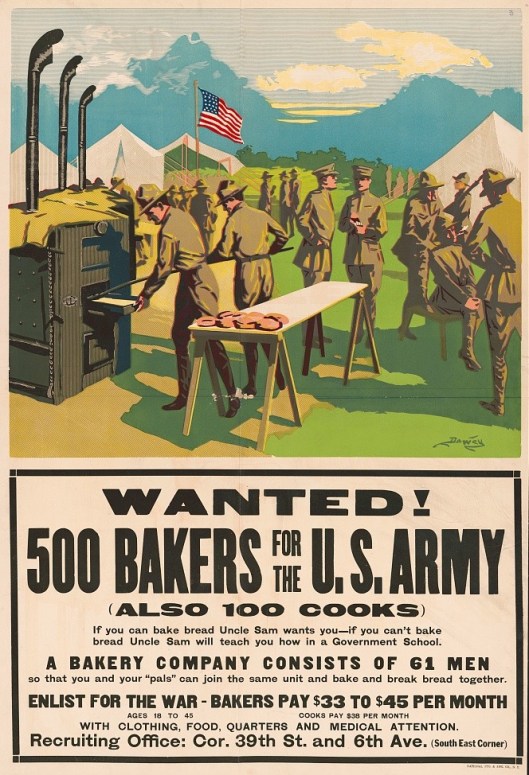Decoration Day, what we now call Memorial Day, originated in the years just after the American Civil War. In 1966, just after the Centennial, President Johnson and Congress pronounced somewhat dubiously that Waterloo, New York was the locale where Decoration Day had begun in 1866. In all likelihood it didn’t happen that way; citizens were showing up independently at local cemeteries throughout the North and South in that first full spring after the war’s end. Tending flowers on graves was timed with the planting season. Still, we do know that two years later John Logan, leader of the Grand Army of the Republic, called for all G.A.R. members to reserve 30 May 30 1868 as the official Decoration Day for members of the organization. This imprimatur added to the institutionalization of Decoration/Memorial Day. I say all this because it did not occur to me until yesterday that this made Decoration Day 1917 the 50th such observation. And yes, that means 2017 is the 150th.
It is unclear if local, state, and federal leaders understood all this in May 1917 but, however coincidentally, it worked out well for the Great War effort. While Governor Whitman was reviewing troops with J. Franklin Bell uptown on 30 May 30 1917, Mayor John Purroy Mitchel was in Union Square christening the U.S.S. Recruit. The ship was just that, a scaled-down mock-up of a battleship built to promote recruiting for the Navy. Mayor Mitchel had long been a proponent of Preparedness and as such was an ally of Theodore Roosevelt, Leonard Wood, and Governor Whitman. Mitchel built the Recruit under the auspices of his Committee on National Defense. Decoration Day 1917 appears to have been something of a tag team affair, with Governor Whitman and General Bell reviewing the Army and National Guard troops uptown while the mayor focused on the Navy farther south. To be sure there was some Navy and Marine involvement in the uptown parade, but it was primarily an Army and Guard event.
New York’s ports were more important to the local economy than they are today–and the Brooklyn Navy Yard was still going strong–but the Navy was nonetheless small and removed from the daily lives of New Yorkers. Hence the idea for the Recruit. Remember, there was no television let alone internet in this era. To see what Navy personnel did–and how you might contribute yourself–the mayor and his allies figured a living model might be helpful. One could buy Liberty Bonds there as well. Here are a few images from that event one hundred years ago today.





(Note: all photographs are via the Library of Congress and were taken on 30 May 1917 with the possible exception of the top most image, which did not have a specific date. I included it to give a panoramic view of the U.S.S. Recruit, which ran about two hundred feet long and forty feet at its widest point.)
 I was at the Brooklyn Museum of Art this afternoon to meet with officials about the walking tour I am doing on Sunday 11 June from 12:00 – 1:00 pm for the museum. The idea was to do a walkthrough of the presentation to see if it fits into the time slot and to decide if any changes or additions might be in order. I ran two people though the walking tour, and we had a fun and productive time running though the thing. I got some good feedback as well. There is nothing like the live audience to keep you humble. Grand Army Plaza was laid out by Calvert Vaux and Frederick Law Olmsted in the years just after the Civil War. The area is one of the places of Civil War memory not just in New York but in the United States. So many people walk past it all every day with no idea. I am looking forward to this event.
I was at the Brooklyn Museum of Art this afternoon to meet with officials about the walking tour I am doing on Sunday 11 June from 12:00 – 1:00 pm for the museum. The idea was to do a walkthrough of the presentation to see if it fits into the time slot and to decide if any changes or additions might be in order. I ran two people though the walking tour, and we had a fun and productive time running though the thing. I got some good feedback as well. There is nothing like the live audience to keep you humble. Grand Army Plaza was laid out by Calvert Vaux and Frederick Law Olmsted in the years just after the Civil War. The area is one of the places of Civil War memory not just in New York but in the United States. So many people walk past it all every day with no idea. I am looking forward to this event.


















